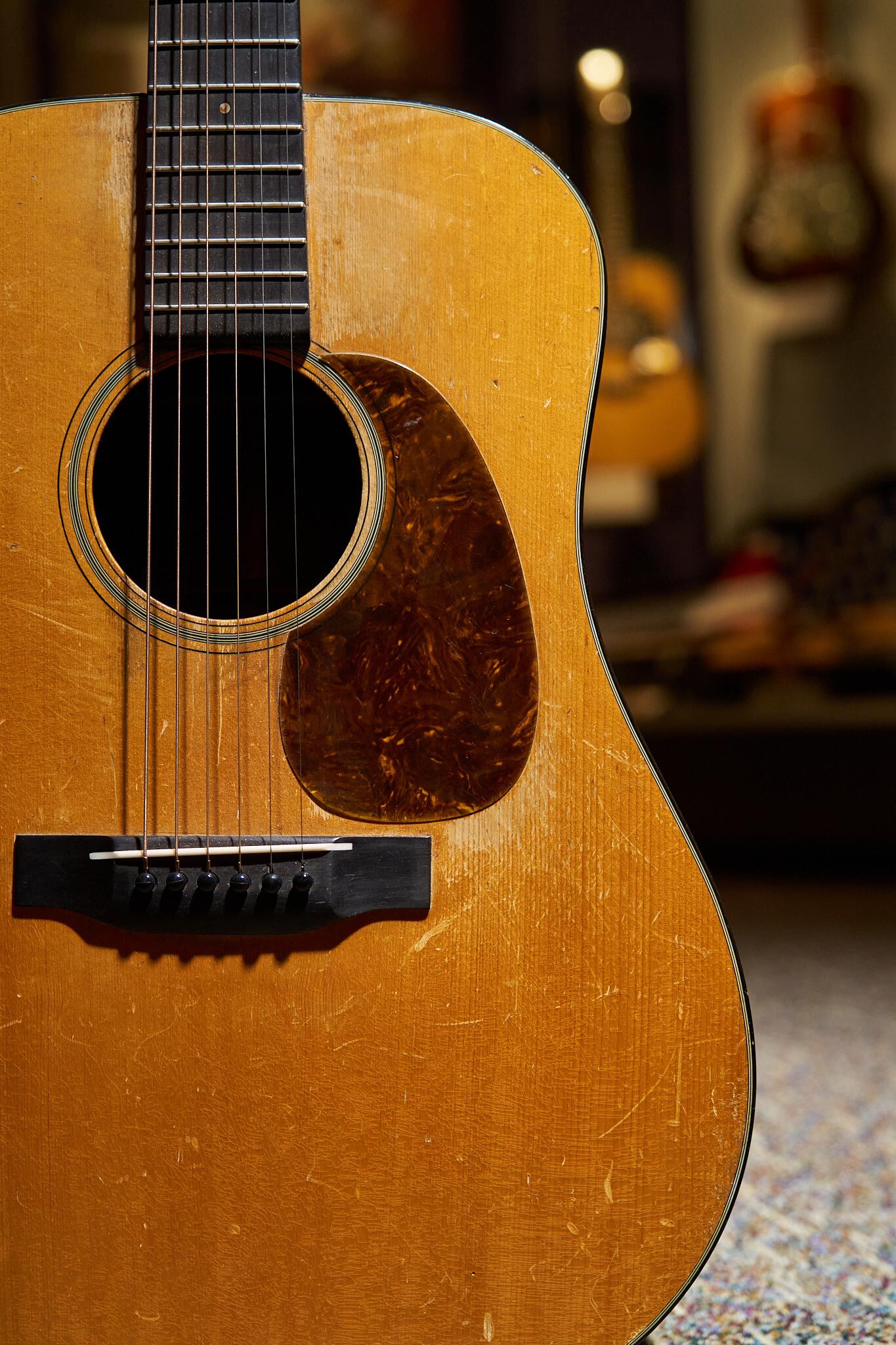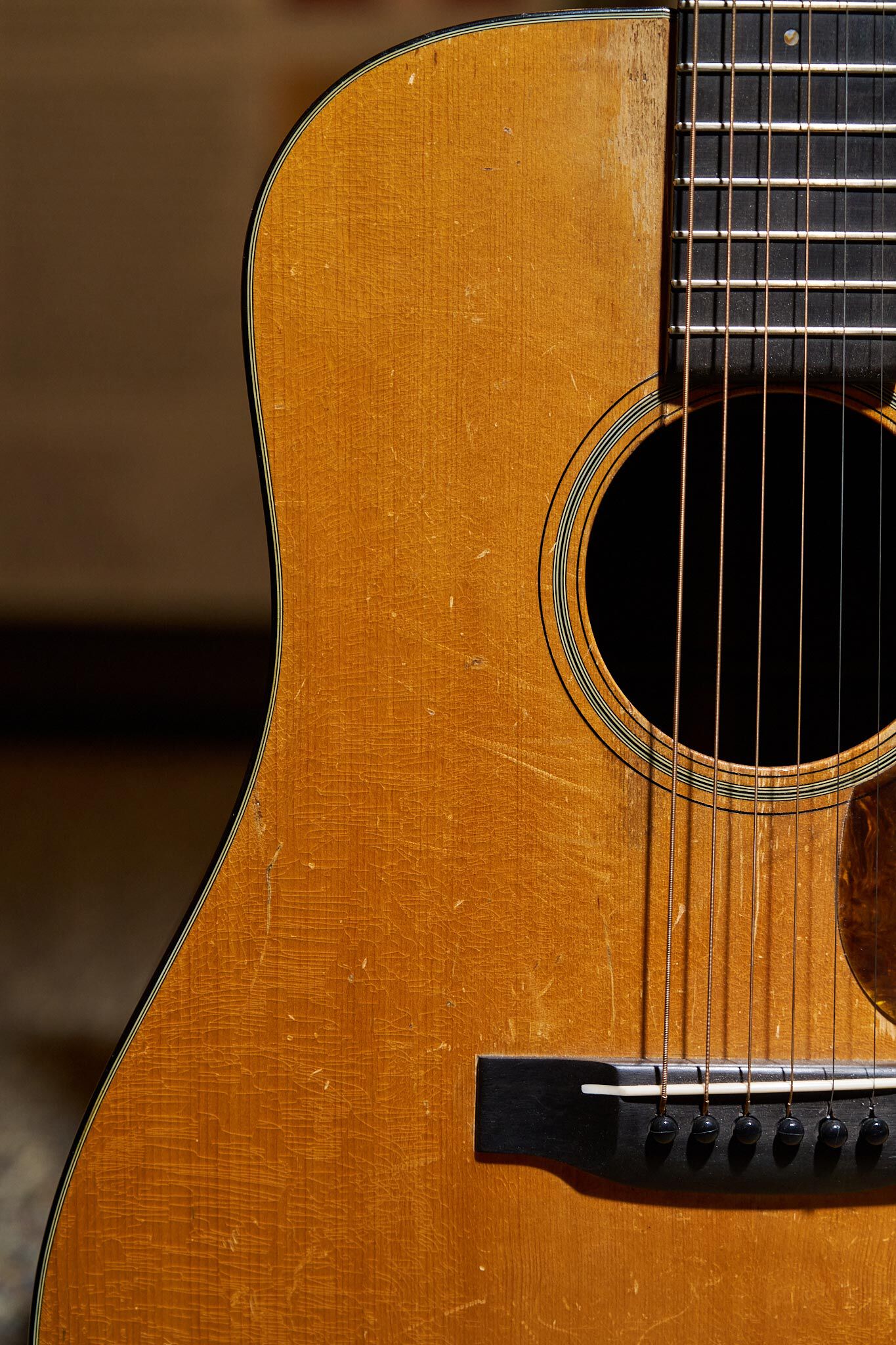From the Factory, Players | October 15, 2025
A Vintage Voice: James Taylor’s 1937 D-18 in the Martin Museum
This pre-war D-18 once shared the spotlight with James Taylor. Now it’s telling its story in Nazareth.
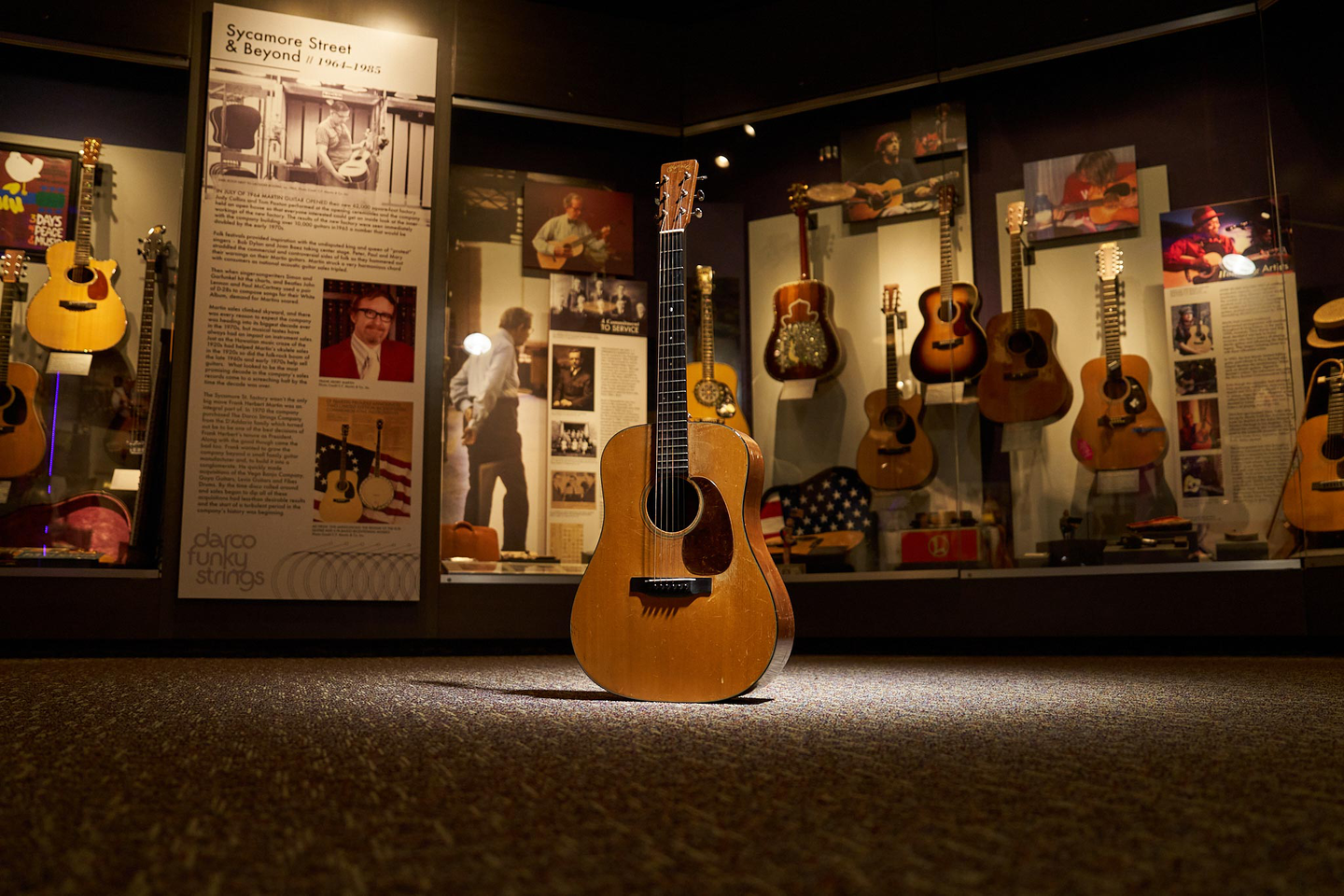
Among the many stories preserved in the Martin Museum, some stretch across entire careers. Others capture a brief but meaningful moment. James Taylor’s 1937 D-18 falls into the latter category. He toured with the guitar for just a couple of years in the early 1970s, but its impact lives on—not only as a vintage Martin tied to one of America’s most beloved singer-songwriters, but also as a key reference in the making of a modern Martin Authentic.
“It was owned by James Taylor for two years,” says Jason Ahner, Martin’s archives and museum manager. “He toured with it during a pivotal period in his career, and we actually used it as a reference guitar when developing our D-18 Authentic 1937 model. So even though it wasn’t with him long, it played a meaningful role in both his journey and ours.”
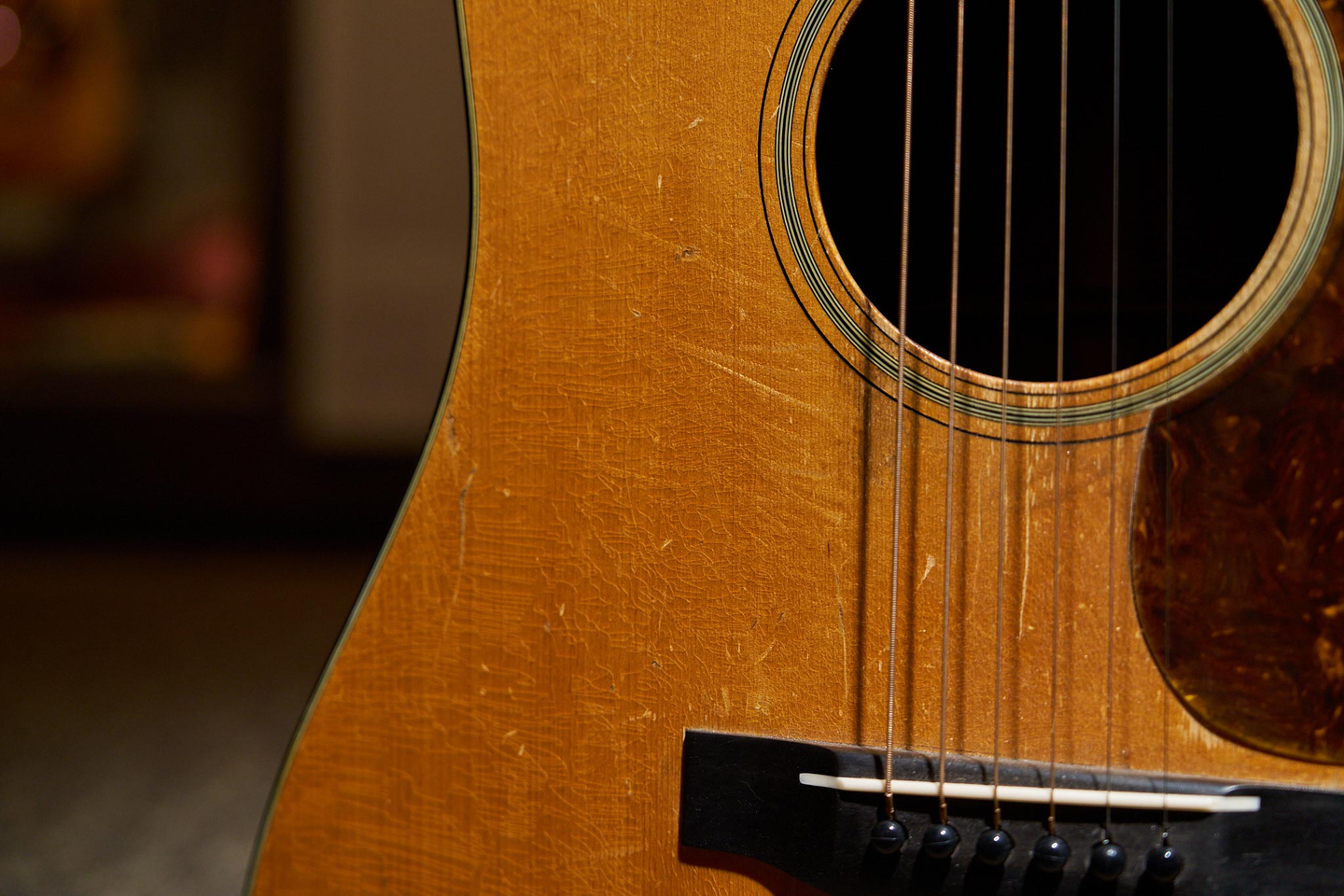
Why 1937 Still Matters
Collectors and musicians alike revere 1937 as a golden year for Martin Dreadnoughts. The guitars from this period are renowned for their tone, projection, and build quality—and the D-18 is no exception.
“Everything just came together that year,” Jason explains. “The materials, the construction techniques—it resulted in instruments with incredible clarity and power.”
One key feature was the forward-shifted scalloped X-bracing, which was phased out the following year but later revived—and now appears on today’s Standard Series Dreadnoughts. That change alone had a major impact on the sound.
“Forward-shifted bracing gives you more volume, a more open and bass-rich sound,” Jason says. “When Martin moved to rear-shifted bracing in 1938, the tone became more balanced, but some of that low-end presence was dialed back. When people play a ’37, they’re often blown away by how full it sounds.”
It’s part of why this model, even without any artist association, is highly valuable on the vintage market. As Jason notes: “You could easily sell a 1937 D-18 for $50,000 to $60,000 based on its sound and condition alone. But once you add in the James Taylor provenance, that value only goes up.”
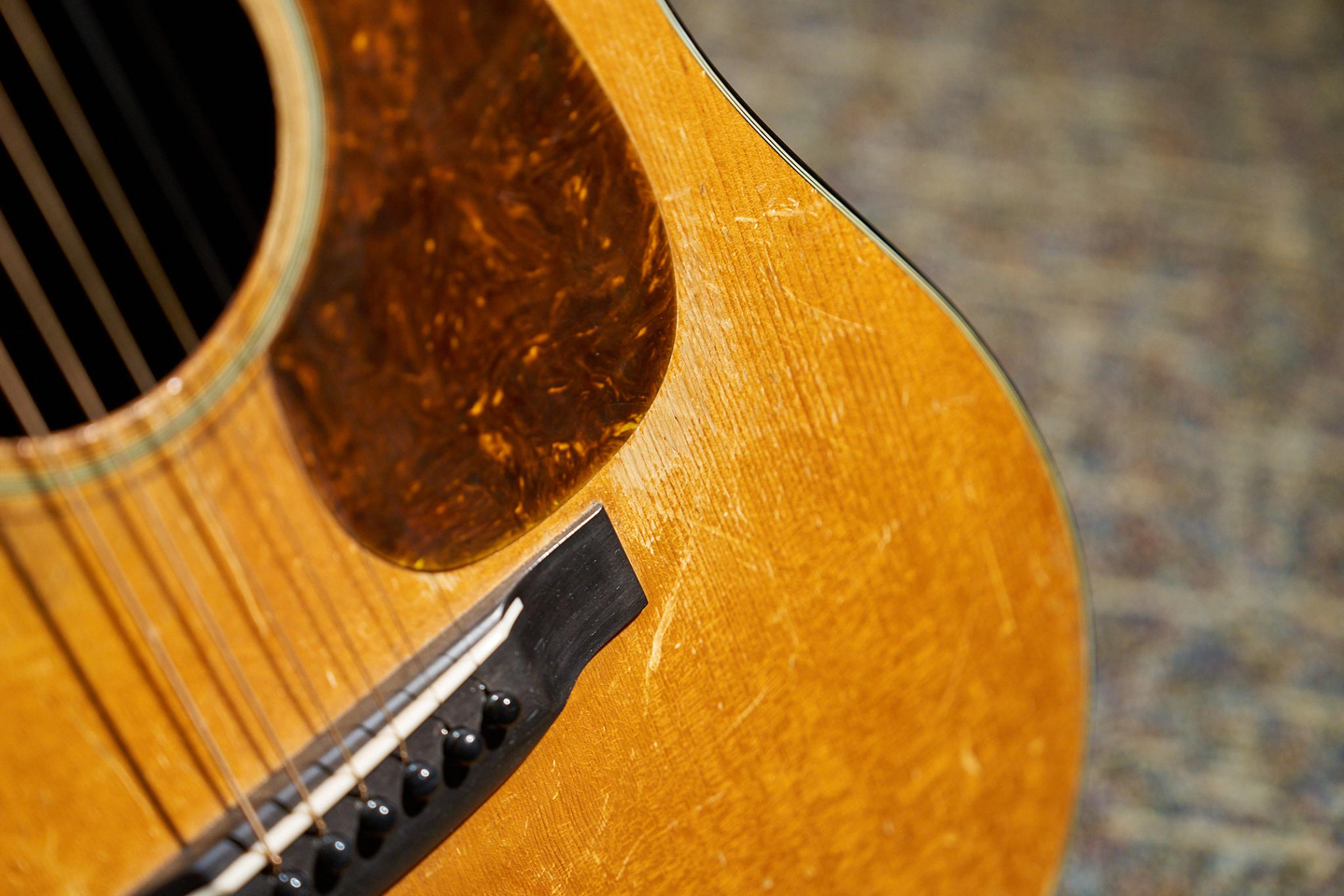
A Pre-Olson Companion
While James is now known for playing Olson guitars, in the early ’70s, he was still playing Martins—and this D-18 was with him during that transition.
“This was before his relationship with Olson really began,” Jason notes. “He moved from playing Martins to Olsons not long after. We don’t know if this was a guitar he wrote on, or if it was more of a touring instrument, but it was his for a couple of important years.”
Though the specific songs it may have helped create remain unknown, the guitar connects to an era when James was helping define the singer-songwriter genre. With hits like “Fire and Rain” and “Sweet Baby James,” his warm baritone, personal lyrics, and unique fingerpicking style resonated with millions—and the guitar he held during that time has earned its place in history.
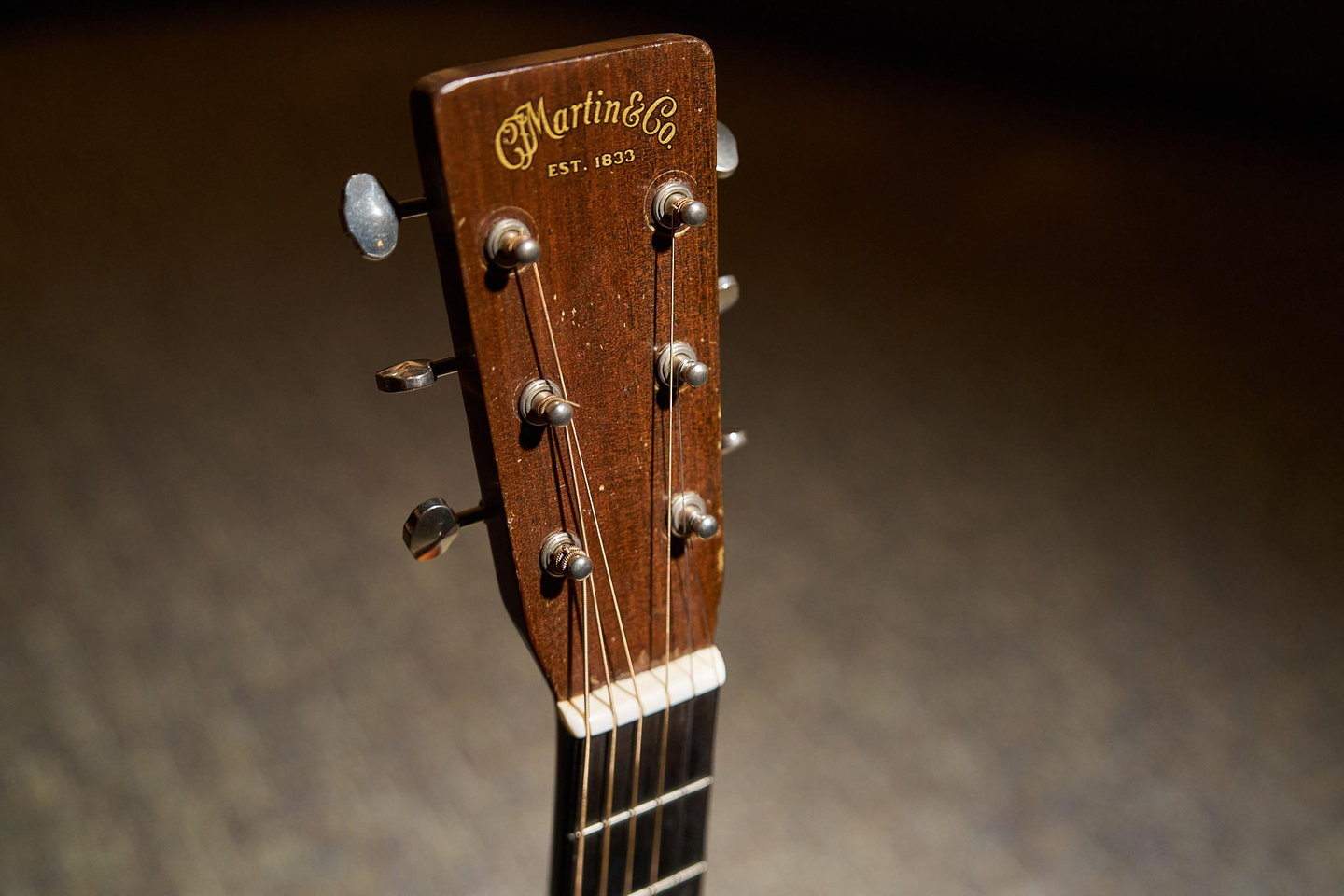
A Turning Point for Martin, Too
James’ time with the D-18 coincided with a surge in demand for Martin guitars. As folk, country, and rock music exploded in popularity, Martin’s production numbers climbed sharply—eventually peaking in the early ’70s.
“Starting in the late 1950s, we began to see strong growth,” Jason says. “But by the late ’60s and early ’70s, demand was so high that we were backed up for multiple years on some models—especially D-28s.”
To meet that demand, Martin opened the Sycamore Street factory in 1964, which allowed for greater efficiency and scale.
“After that, you see production totals rise every year,” Jason continues. “By the early 1970s, we were making around 20,000 guitars annually. And many of the artists driving that growth—James Taylor among them—were part of the folk rock and country rock movement happening in places like Laurel Canyon.”
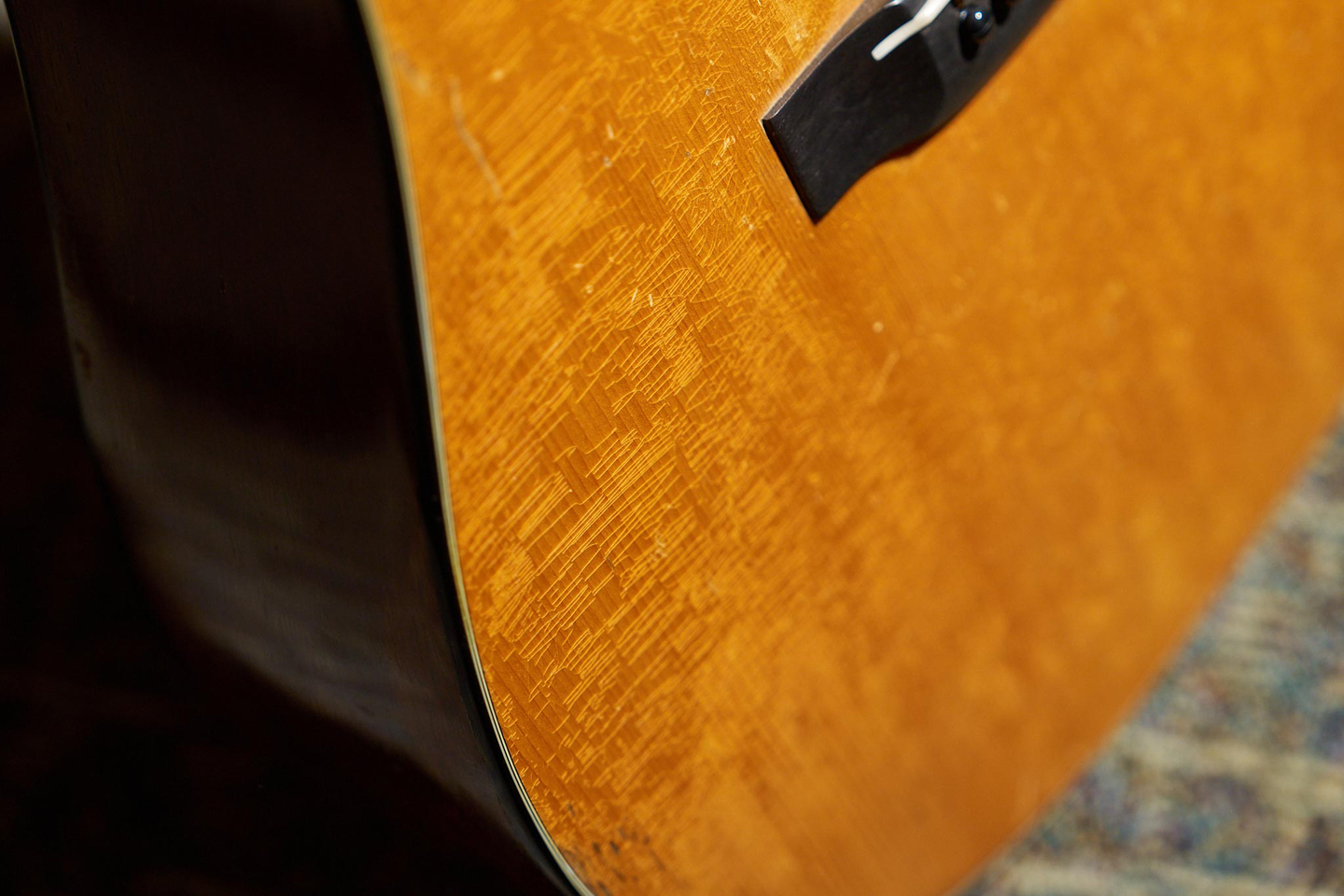
Built to Inspire the Next Generation
James’ D-18 is more than a relic—it’s part of the DNA of the Martin D-18 Authentic 1937. The modern model uses period-correct materials, specs, and construction methods to bring that legendary sound to a wider audience.
“One of the reasons we build our Authentic models is because of how incredible these vintage guitars sound,” Jason says. “But let’s be honest—not everyone has $60,000 to spend on an acoustic guitar.”
By closely studying original instruments like James’, Martin’s craftspeople are able to capture not just the specs, but the soul of a vintage build—offering that experience in a more accessible, or even lightly aged, stage-ready package.
“This guitar was part of that process,” Jason says. “It helped inform one of our most sought-after Authentics. That’s a special legacy.”
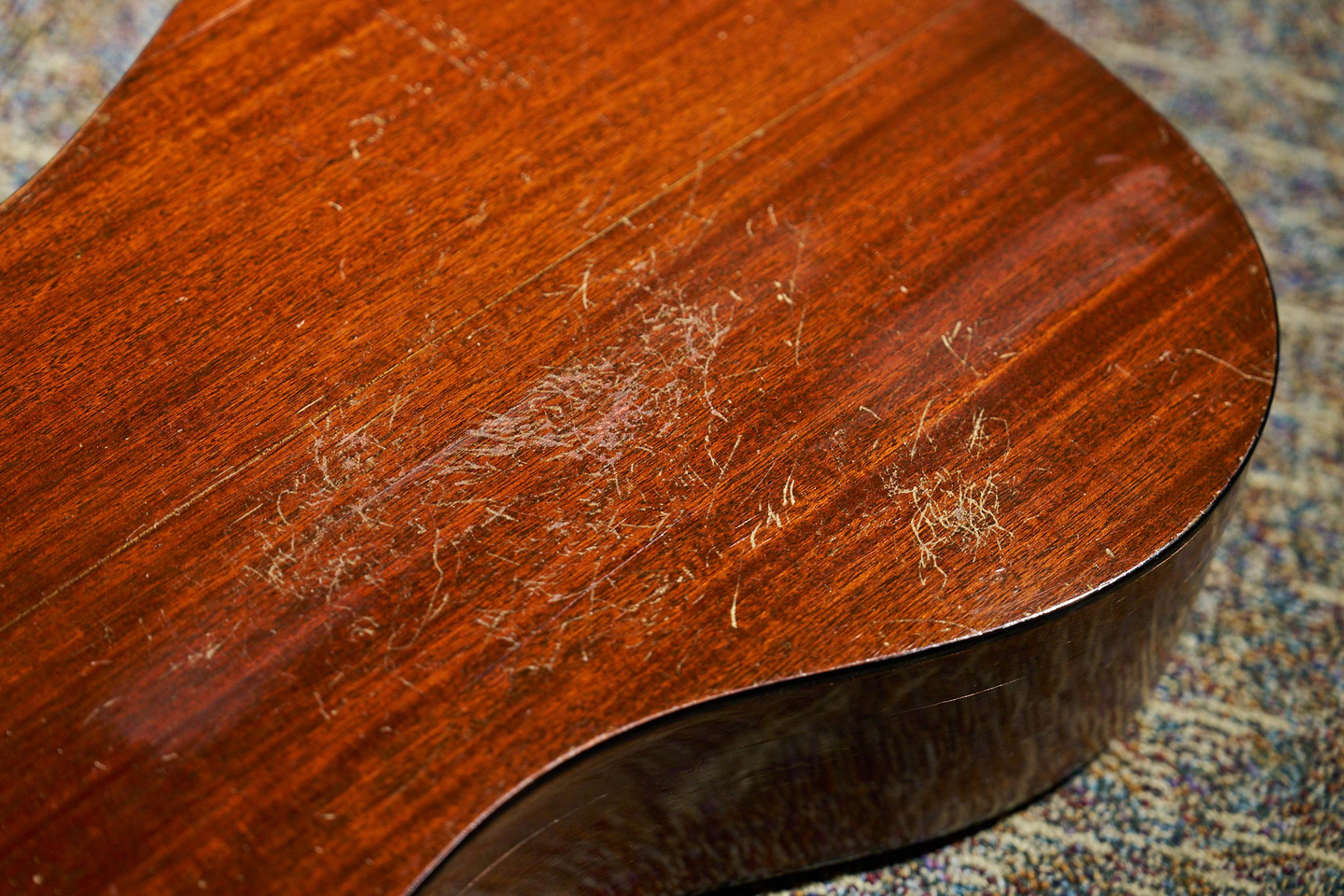
See It for Yourself in Nazareth
James Taylor’s 1937 D-18 is now on display at the Martin Museum in Nazareth, Pennsylvania. Whether you’re a longtime fan or just discovering his music, it offers a fascinating glimpse into a moment in time—one that connected artist and instrument, tradition and innovation, the past and the future.
“This guitar might not have been with James Taylor forever,” Jason says, “but it was part of something meaningful. And now, it’s helping us tell that story to the next generation of players.”
More From the Martin Museum
Explore other legendary artist guitars on display, including:
- Judy Collins’ 1971 D12-35
- Eric Clapton’s 000-28EC prototype
- Joan Baez’s 1880 0-40
- Kurt Cobain and Elliott Smith’s 1953 D-18
- Les Paul’s first “good” guitar
- Motörhead’s DC-16WE
- John Mayer’s original OM-28JM prototype
- Johnny Cash’s D-42
- Hank Williams’ 1947 D-18
Stay tuned for more stories behind the strings—only at the Martin Museum.
Until next time, happy playing!
